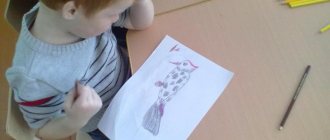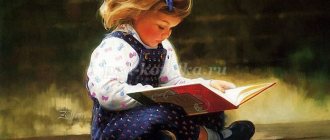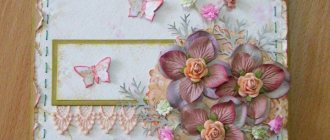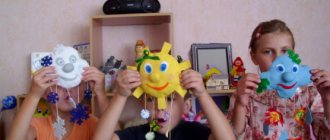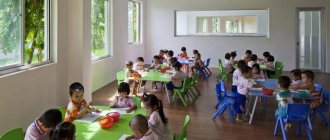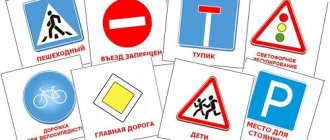Summary of fine arts activities in the senior group of kindergarten
Summary of fine art activities in the senior group on the topic: “Bird - whistle.”
Decorative drawing Author: Polukarova Svetlana Sergeevna, teacher of fine arts activities of MKDOU "Anninsky kindergarten" ORV "ROSTOK" urban settlement.
Anna, Voronezh region. Description of the material: I offer you a summary of fine arts activities for children of the older group (5-6 years old) on the topic “Bird - Whistle.” This material will be useful for teachers in kindergarten drawing.
Summary of fine art activities in the senior group on the topic “Bird - Whistle”.
Decorative drawing. Goal : to teach children to build an elegant pattern on the silhouette of a bird using alternating color spots, to practice conveying dots, strokes, and wavy lines with elements of a decorative pattern. Learn to hold the brush correctly, adjust the pressure, carry out the sequence of operations. Objectives: To introduce children to the history of the whistle. To expand children's knowledge about the use of whistles in our time. Provide a figurative assessment of finished work. Demonstration material : two birds - whistles (clay, wooden - painted), a finished drawn sample with a bird - whistle. Handouts : album sheets (with the silhouette of a bird - a whistle), gouache, brushes, a cotton swab, a sippy cup. Methodological techniques : conversation - dialogue, looking at illustrations and talking about them, summing up. Progress of the lesson. Teacher. Guys, listen to the riddle and try to guess it. I take the bird in my hands and quietly blow “Too-oo-oo” into it.
This is not a simple bird - but made of clay, painted. (
whistle ). — Have you heard about such an instrument? (children's answers). I show two whistles, a painted wooden one and a clay one (just brown). The whistle is the oldest Russian folk wind musical instrument. - Listen to how the whistles sound. Why do you think the whistle is called a wind instrument? (Because you have to blow into it). — Who wants to try playing our little interesting instrument? (children take turns blowing the whistle) It appeared a long, long time ago. Our distant ancestors used the whistle as a magical instrument to cause long-awaited rain and gusts of refreshing wind during the summer drought and heat. Nowadays, whistles have turned from serious magical instruments into children's fun toys. True, whistles can also be heard in modern folk music groups. - Guys, what are whistles made of? (made of clay, wood). A shaped whistle is usually made in the shape of a small, bright bird from baked and painted clay. - Guys, listen to the story of the toy - the whistle. During the long cold months, the women of the village gathered in large huts, placed a basket of clay in front of them, and then, slowly, while talking and singing, they sculpted toys. Roosters and hares, dogs and bears appeared in the hands of craftswomen. Since then, it has been like this - older women taught their daughters to sculpt a toy. Craftswomen made a toy from a whole piece of clay, softening it for a long time before doing so. Then they sculpted the animal’s body, legs, neck, and head. Then, with a simple wooden stick sharpened at the end, two inconspicuous holes were made and the toys were burned in the oven. The most enjoyable activity for craftswomen is painting toys. Currently, whistles are used as a folk toy and as a wind musical instrument. Independent work . - Guys, you each have a piece of paper with the silhouette of a bird - a whistle. Look at our birds, which are white and boring, let's turn them into real musical painted bright toys! To do this, we will first paint the beak with red paint, separate the head from the body and the legs from the body with a stripe, make four red petals on the chest (by applying a brush), and leave two imprints from the brush on the legs. The eye will also be an imprint from the brush. All that's left is to steal the tail. We make a wavy line along the entire length. Next, with yellow color, to make the flower even more beautiful, we will make yellow ones between the red petals, and on the legs we will leave two more strokes, only with yellow color. Now we’ll make dots with cotton swabs. This will be the tuft, the middle of the flower, between the petals and on the tail. Summarizing . At the end of the work, we examine the drawings and invite the children to choose the most beautiful, bright, and funny drawings. We look at and enjoy the resulting work. Photos from the lesson
We recommend watching:
Summary of educational activities in the senior group “Northern Adventures” Summary of a conversation with children of senior preschool age Summary of educational activities in speech therapy for the senior group Methodological development of a summary of an excursion for children of senior preschool age
Similar articles:
Summary of a mathematics lesson in the senior group of kindergarten. Geometric figures
Summary of a lesson on art activities in the senior group
Municipal preschool educational institution "Olenovsky nursery-garden No. 23, Volnovakha district"
Summary of the lesson on visual arts “Tricks of the Blots” (senior group)
Teacher of the highest category
Tseglevka Nina Nikolaevna
Program content:
- expand children's understanding of the variety of colors in the spectrum;
- learn to independently choose image methods according to the plan;
- consolidate the ability to use previously acquired technical skills and abilities in a plot drawing;
- develop children's creative imagination and fantasy;
- cultivate neatness, aesthetic taste, and the ability to complete the work started.
Progress of the lesson
(the group room is decorated with greenery, vines, bright,
colorful soft toys)
Educator:
Guys, do you like to travel? I want to invite you to go to a wonderful, extraordinary country, where you and I will meet old acquaintances, meet and make new friends. And we will go to this country on a ship called...Who can read the name of the ship? (children's answers). That's right, it's called "Rainbow", but only those who correctly name the color in the rainbow and receive an invitation can enter it (children name the colors of the rainbow in the order in which they are: K-O-Z-G-S -F, they receive invitations of different colors and “enter” the ship. The melody of the song “Chunga Changa” sounds)
- What country are we in? Look, guys, how beautiful it is here! And here is the name of this country. (Children read). Yes, that's right, this is Fantasyland. Guys, this country consists of wonderful islands. And here is the first island - the Island of Flowers. You see beautiful flowers (red, blue and yellow). I invite you to gather at the flower that your invitation matches (children must choose their places correctly: red, orange sit on a red flower, yellow and green on a yellow flower, purple, blue and blue on a blue flower).
- The owner of this island is Tsvetik - Multi-colored (a picture appears with the image of a sad multi-colored man). But he's kind of sad today. Here is a box of paints and some kind of letter. Now let's find out what happened? (“reads the letter”)
- Yes, guys, things are not fun. As it turned out, paints now have enemies. The evil Black Blob (a blot appears) stole some colors from the paints. We need to find out which ones and return them to their place. Shall we help the paints? (children are given tasks:
- What color will you get if you mix yellow and blue paints? (green)
- What do you get if you mix blue and red? (violet)
- what if you add white to black? (grey)
the children name the expected colors, the teacher opens them on the palette, and the child at the easel “checks” the correctness of the answers. The blot disappears)
- Well, so we helped the inhabitants of the island of flowers. Tsvetik invites us to another island - the Island of Fairy Tales. (the children sit down at the tables, the Blob appears again. There are black bags on the teacher’s table). Guys, fairy tales live on this island, to which paints gave their names, but I see that the Blob has done its dirty deed here too - it has bewitched all the fairy tales and repainted them black. Let's try to help disenchant them? You need to guess the name from an excerpt from a fairy tale and then the witchcraft spell will dissipate. (Excerpts from fairy tales are read out:
- " Little Red Riding Hood"
- " The Scarlet Flower"
- "Tsvetik - seven-colored"
(as you guess passages from the black bags, books appear). So we corrected the second trick of the Blob. Now the road has led us to the third island - the Island of Creativity. I want to invite you to listen to a new fairy tale, and then we will look at the illustrations for it.
"In the Sweet Carrot Forest"
The hare loved carrots most of all.
He said:
— I would like carrots to grow in the forest instead of fir trees.
The squirrel loved nuts most of all.
She said:
- I would like, Hare, that instead of cones your carrots would grow nuts.
The little bear loved honey most of all.
He said:
— I would like slow honey rains to fall in the fall.
The hedgehog loved dried mushrooms most of all.
He said:
- Let your rains, Little Bear, come after I pick mushrooms.
And that’s how it turned out.
Instead of Christmas trees, carrots grew overnight. The hare cut down two carrots and dragged them to his house.
Nuts grew on the carrot tails. The squirrel collected a whole basket of them and hid them in the hollow of the thickest carrot.
The hedgehog walked between the carrots and picked mushrooms.
And by autumn, slow honey rains began to fall.
The hare ate carrots with honey.
Squirrel – nuts with honey.
Hedgehog – mushrooms with honey.
And Little Bear stood all day long on the carrot edge with his mouth agape, and only when it got dark - just for a little while, just a little bit - after thoroughly licking all four honey paws, he went to bed.
And all the wolves left the forest.
Because wolves don't like sweets...
— Interesting fairy tale? Now let's look at the pictures. (opens the “book”, but there are no pictures in it). This is again the tricks of the Blot. Let's guys make drawings for this fairy tale ourselves and create a book. This will be the first book that we will publish ourselves. (there is a discussion of depiction methods, techniques. Children perform work on the back of a colored or tinted sheet of paper)
- Now we will connect the pages, fasten them to the cover, and we will have our own book, created with our own hands.
Summary of GCD on art activities in the senior group
Lesson notes on visual arts.
Senior group. Topic: “Fairytale fish” Educational objectives:
- Clarifying children’s ideas about fish.
— Strengthen the ability to work with waste material. — Strengthen the ability to format your work with additional material. — Strengthen the ability to use material economically and rationally. Developmental tasks:
- Development of fine motor skills of the hands.
— Development of fantasy and imagination. — Develop perseverance and creativity. Educational objectives:
- Formation of neatness and careful attitude to materials.
— Develop the ability to notice shortcomings in your work and correct them. Preliminary work:
Examination of paintings depicting fish (goldfish).
Conversation about fish. Modeling "Goldfish" using waste material. View slides about fish. Reading a fairy tale by A.S. Pushkin “The Tale of the Fisherman and the Fish” Listening to the sound of the sea surf. Demonstration material:
Slides, audio recordings of the sound of the sea surf, pictures of a goldfish.
Equipment: Blue cardboard with a fish stencil image, sequins, scraps of fabric, a brush for PVA glue, glue, paper napkins, scissors, oilcloth.
Progress of the lesson:
The sound of the sea surf sounds.
Educator - Guys, listen. What is this noise? Children's answers. It's the sound of the sea. Educator - Correct. And now, we will dream up a little. Imagine that we are on the seashore. There is a blue sky above our heads, warm sand under our feet, and the sea ahead. How beautiful! Let's remember the fairy tale by A.S. Pushkin's "The Tale of the Fisherman and the Fish". Educator - Guys, what is this fairy tale about? Children's answers. About an old man, an old woman, a goldfish. Educator - Yes, this fairy tale is about a goldfish that fulfills all wishes. Educator - A variety of fish live in the sea. There are fish that are edible for humans. Name what fish you know. Children's answers. Pollock, pink salmon, perch, etc. Educator - There are dangerous fish. They can prick with a poisonous thorn, like the sea cat and the sea dragon; and even give you an electric shock like a stingray. Educator - Yes, there are a lot of fish in the oceans and seas. Educator - And now we will look at the slides with pictures of fish. Educator - Guys, what kind of fish did you see on the slides? Children's answers. Shark, dolphin, whale, etc. Educator - You guys see, what an amazing and very beautiful sea world. Educator - Guys, let's remember what body parts fish have and why they serve them. All fish have a tail. He serves as their rudder. Fish also have fins. Why do you think fish have fins? The word itself will tell you. Fish need fins to swim. Of course, fish have eyes. What are eyes for? Children's answers. The body of fish is covered with plates - scales. Educator - Now you and I will rest a little. Physics minute: “Steamboat”
The steamboat pushed off from the green pier (stand up) He first stepped back, (step back) And then stepped forward (step forward) And swam, swam along the river, (movements with his hands) Gaining full speed.
(Walking in place) Educator - And now, you and I will perform the “Fairytale Fish” application. You have ready-made fish stencils on your tables. You need to use sequins to show the scales of the fish; we will make the tail from tracing paper. Then we will show algae and pebbles in the aquarium, for this you have strips of green paper and scraps of fabric. Everything is clear, then let's get started. During work, I monitor the children’s activities and help if necessary. After completing the application, we lay out the work on the tables and examine them. Summary of the lesson: General questions:
Teacher - Guys, what new have you learned about fish? Children's answers. There are different types of fish. Dangerous for humans. Edible fish. Educator - Guys, did you like working with unusual material? Children's answers. Yeah interesting. Educator - Guys, do you like the resulting fish of your comrades? Children's answers. I liked it. Educator - Today you did a very good job, and I prepared small gifts for you. The teacher takes stickers of different fish from the bag and distributes them to the children.
We recommend watching:
Summary of GCD in the senior group on the topic: “Expedition to the taiga”
Synopsis of an integrated GCD in the senior group “Chest of Health” Synopsis of GCD in the senior group “Journey to a Fairy Tale”
Intellectual quiz “What? Where? When?" in the senior group
Similar articles:
Summary of GCD for the senior group of kindergarten
Cognitive lesson in the senior group
Summary of GCD in the senior group. Excursion into nature
Summary of educational activities on cognitive development with elements of experimentation in the senior group
Abstract of GCD in the senior group on the topic: “Mathematics - Logic”
